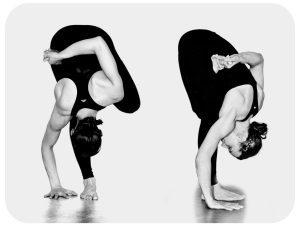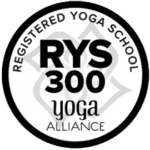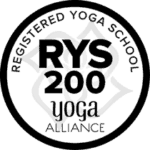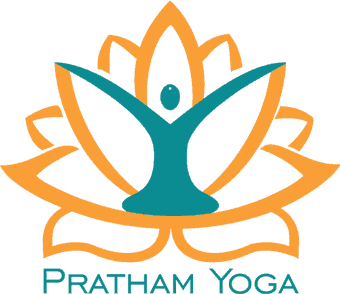Ardha Baddha Padmottanasana: Understanding Its Meaning and Significance
Yoga, an ancient practice rooted in mindfulness and physical discipline, holds within its repertoire an assemblage of poses that are not just exercises but gateways to holistic well-being. Among these, Ardha Baddha Padmottanasana stands as a posture revered for its multifaceted benefits. Aspiring yogis embarking on their journey through yoga teacher training courses, such as the acclaimed 200-hour and 300-hour programs offered by Pratham Yoga in Rishikesh, India, encounter this pose as an essential part of their curriculum. In this comprehensive guide, we delve into the history, essence, benefits, and safety measures associated with Ardha Baddha Padmottanasana, unveiling its significance in the yogic sphere.

History of Ardha Baddha Padmottanasana:
The roots of Ardha Baddha Padmottanasana can be traced back to ancient yogic texts and scriptures, where the practice of yoga was not merely a physical discipline but a holistic approach to aligning mind, body, and spirit. The pose finds its origins in Hatha Yoga, where it was considered a vital component for awakening spiritual energy and enhancing physical flexibility. Over centuries, this asana has transcended borders and evolved, gaining recognition globally for its therapeutic effects on the body and mind.
What is Ardha Baddha Padmottanasana in Sanskrit?
Ardha Baddha Padmottanasana, when dissected from its Sanskrit roots, comprises ‘Ardha’ meaning half, ‘Baddha’ signifying bound, ‘Padma’ representing lotus, and ‘Uttanasana’ implying intense stretch or extension. Hence, this asana translates to the ‘Half Bound Lotus Intense Stretch Pose’.
What is Ardha Baddha Padmottanasana?
Ardha Baddha Padmottanasana is a graceful yet challenging yoga pose that integrates elements of balance, flexibility, and concentration. It involves assuming a half lotus posture while simultaneously bending forward with a bind, culminating in a deep stretch of the legs, hips, and spine. The asana not only enhances physical flexibility but also cultivates mental focus and balance.
Ardha Baddha is Also Known as Half Bound Lotus:
The term ‘Half Bound Lotus’ refers to the posture’s distinctive positioning of the legs, where one leg is in a half lotus position while the other remains extended. This configuration adds an extra layer of complexity to the pose, requiring practitioners to find equilibrium and stability while maintaining the asana.
Benefits of Ardha Baddha Padmottanasana:
The practice of Ardha Baddha Padmottanasana offers a plethora of benefits that extend beyond the physical realm. Some key advantages include:
Enhanced Flexibility
The pose deeply stretches the hamstrings, thighs, and hips, gradually improving flexibility in these areas.
Improved Balance and Focus
Balancing on one leg while binding the other demands concentration and steadiness, fostering mental focus and equilibrium.
Stimulated Digestion
The forward bend compresses the abdominal region, aiding digestion and alleviating gastrointestinal discomfort.
Relief from Sciatic Pain
Regular practice can provide relief from sciatic pain by stretching and releasing tension in the sciatic nerve.
Energetic Flow
Ardha Baddha Padmottanasana activates the flow of prana (life force energy) throughout the body, promoting vitality and rejuvenation.
How to Perform Ardha Baddha Padmottanasana Safely:
While Ardha Baddha Padmottanasana offers numerous benefits, practicing it with caution and mindfulness is crucial to avoid injury. Follow these steps for a safe practice:
1. Begin in Tadasana (Mountain Pose) with feet hip-width apart and hands on the hips.
2. Shift weight onto one leg and bring the opposite foot onto the inner thigh in a half lotus position.
3. Extend the opposite arm and clasp the foot in the half lotus, folding forward from the hips.
4. Maintain length in the spine as you hinge forward, keeping the torso close to the extended leg.
5. Hold the pose for several breaths, then slowly release the bind and return to Tadasana.
What to Focus on While Practicing Ardha Baddha Padmottanasana:
As you engage in Ardha Baddha Padmottanasana, pay attention to the following key aspects:
Breathing: Maintain steady and deep breathing throughout the pose to facilitate relaxation and focus.
Alignment: Ensure proper alignment of the spine, hips, and legs to avoid strain and maximize the stretch.
Gradual Progression: Approach the pose progressively, respecting your body’s limits and gradually deepening the stretch over time.
Mindfulness: Cultivate awareness of your body, breath, and sensations, fostering a meditative state during the practice.
Ardha Baddha Padmottanasana, with its intricate blend of balance, flexibility, and concentration, embodies the essence of yoga as a holistic practice. Prospective yoga instructors enrolled in the immersive 300 Hour Yoga TTC in Rishikesh, India, at Pratham Yoga embark on a profound journey of self-exploration and holistic development. This all-encompassing course expands upon the fundamental 200-hour Yoga Teacher Training Course (TTC) in Rishikesh. It guides participants through a transformative asana, acting as a pivotal gateway to self-discovery and holistic well-being within the context of the 200 Hour Yoga TTC in Rishikesh.
Embracing this pose with reverence, practitioners can unlock the profound benefits it offers, transcending physical limitations and nurturing a deeper connection between mind, body, and spirit. Through mindful practice and guidance from experienced instructors, Ardha Baddha Padmottanasana unfolds its transformative potential, paving the way for a more balanced and harmonious existence.


